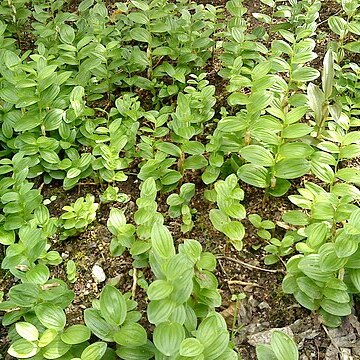A herb. It grows 15 cm tall. It has rhizomes or underground stems. They are 3-5 mm thick. The stem is erect. There are 7-9 leaves which are alternate. The leaf stalk is very short. The leaf blade is oval or oblong and 5.5-8.5 cm long by 1.5-4 cm wide. It tapers to the tip. The flowering stalk usually has one flower. The flowers hang down. The fruit are berries which are blue-black. They are about 1 cm across with 5-6 seeds.

